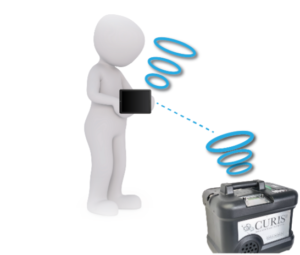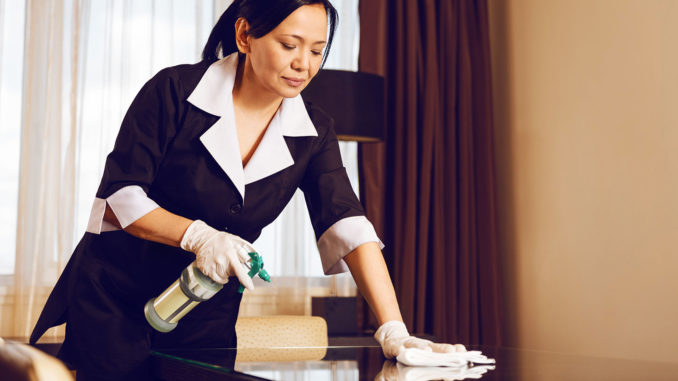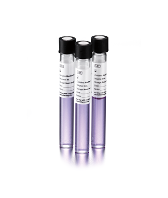Sponsored Content
By Chris Schultheis, M.S., President, Midwest Pathogend Services
If you’re adhering to your organization’s best practices for regularly wiping down every surface with an EPA-approved COVID-19 disinfectant, using UV lights, or even using some commercial spraying systems to disperse chemicals, then you may believe that you’re doing all you can to help combat the spread of COVID-19. However, well-established research tells us that those efforts may actually be making things worse, by increasing the chances for bacteria to grow and spread and eventually become resistant to our current disinfectant methods.
While most people understand the importance of regular cleaning and disinfection, many are using products without understanding how they are meant to be used and are not achieving an optimal kill. For instance, a product may boast a 99.999 percent kill, but does not explain that this requires following very strict usage guidelines. Many are fooled by “magic marketing” that claims they can achieve wonders with a product, leaving out the details of what it takes for those marketing headlines to be achieved.
How Do You Know That Your Methods Work and Aren’t Making Things Worse?
Here are some guidelines that will help:
Lower your risk of human error.
Make sure that you read and fully understand how to properly use disinfecting tools. For example, a UV light might need eight inches of proximity to the target surface to achieve its strongest kill, otherwise you might be leaving behind a lot more germs than you think. If a spray product needs to be manually applied, it can pose a risk for human error. Surface areas can be missed, required dwell times can be ignored or unknown, and unwiped residues can build up and cause areas for bacteria to grow.
Remember: If it’s sticky, it’s tricky.
How many times have you wiped a surface with a disinfectant cleaner and felt or seen a sticky, tacky residue? If you’re like most observant people, probably often. Aside from potentially causing corrosion to many surfaces and equipment, this stickiness may create a germ reservoir where bacteria and other organisms remain and even thrive. When you use a cleaning cloth to wipe off a sticky disinfectant chemical, you may be inadvertently moving germs from one surface to another because of those very same adhesive qualities of the disinfecting agent.
Prove that you’re killing something.
The best disinfection methods should include biological indicators to show that a hard-to-kill organism, like what is used in proving sterilization, has indeed been successfully killed. Unfortunately, if you’re using an electrostatic or other disinfection surface spray, it is difficult to know or measure quality control – it’s basically “spray and pray” that it kills what and where you think it does. Additionally, if you can’t use a biological indicator with your UV light, how do you know that it worked?
Understand the potential dangers.
Many commercial solutions on the market today have been proven to leave behind dangerous, toxic residues that collect grime and cause corrosion to surfaces, materials and electronics, and that have been linked to neurotoxicity, allergies and anti-microbial resistance in humans. According to the American Lung Association, exposure to chemicals from cleaning supplies has been linked to occupational asthma and other respiratory illnesses. The safest and most reliable systems use smart technology that enables remote manual operation without ever coming into contact with dangerous germs or harmful chemicals.
Know YOUR LOG.
Know the nines in your disinfectant (99.9 percent to 99.9999 percent). Many of the most commonly used cleaning methods approved for COVID-19, including ammonium chloride mixtures commonly found in disinfectant wipes, sprays and other household and commercial cleaners, only kill 99.9 percent of germs. We say “only” because this means that they can leave up to 1,000 harmful organisms behind in any one spot, including those that have the potential to create germ breeding grounds. The most effective disinfection solutions achieve a 99.9999 percent kill rate, or log reduction, which refers to the number of living microbes that are virtually eliminated by disinfection.
Switch It Up.
The Centers for Disease Control and Prevention recommends alternating disinfectants to prevent organisms from developing resistance. Similar to preventing antibiotic resistance in people, bringing in a new disinfecting product can keep the pathogens guessing and be the strong arm needed to combat the spread of pathogens on environmental surfaces.
Using the Correct Disinfection Solution and Techniques Is Critical.
The bottom line is that using the right disinfection techniques and products is clearly critical.
 It’s important to note that there are products on the market today that exhibit absolutely no known pathogen resistance, such as oxidative products, where organisms haven’t figured out how to evolve and adapt to them yet. Hydrogen peroxide disinfection, as an oxidizer, is among the best options for facilities to overcome the risk of pathogen resistance on environmental surfaces. Pathogens will always be in our environment, but fortunately we are getting smarter at understanding how to effectively kill them and stop the spread, so that we can combat today’s outbreaks as well as be better prepared for future ones.
It’s important to note that there are products on the market today that exhibit absolutely no known pathogen resistance, such as oxidative products, where organisms haven’t figured out how to evolve and adapt to them yet. Hydrogen peroxide disinfection, as an oxidizer, is among the best options for facilities to overcome the risk of pathogen resistance on environmental surfaces. Pathogens will always be in our environment, but fortunately we are getting smarter at understanding how to effectively kill them and stop the spread, so that we can combat today’s outbreaks as well as be better prepared for future ones.
Reference Articles:
- https://www.cmmonline.com/articles/q-a-electrostatic-spray-technology
- https://www.cdc.gov/infectioncontrol/guidelines/disinfection/recommendations.html
- https://infectioncontrol.tips/2019/08/04/responsible-electrostatic-sprayers/ – published in the Orlando Medical News, February 2021, p. 13





